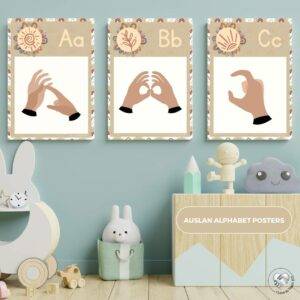Classroom Shop: Where Big Points Meet Big Achievements

The quest for strategies that genuinely engage and motivate students is never-ending. The classroom shop is a way of giving rewards that combines the excitement of points with the freedom to choose.
It goes beyond the traditional star chart, offering a diverse array of incentives tailored to capture every student’s interest. From working in the corner hideaway for an hour, to renting the best soft chair in the room, and so on.
Classroom Shop: the appeal of big points
A long time ago, I learned that kids love big numbers. Imagine how happy students feel when they see that they got 20 points instead of just one or two. I’ve even heard students comment in the school yard ‘Ha, she gave me one dojo, just one, I’m not doing it again’ and the other student reply’ What’s one dojo? Nothing!’.
There’s a unique kind of excitement that bubbles up when students are rewarded with 20, 30, 50, or even a 100 points for their efforts. This excitement is a powerful motivator, making the act of earning points feel like a grand adventure.
More than just rewards: teaching valuable skills
The classroom shop is more than just an amusing distraction. It’s a real-life application that teaches budgeting, saving, and strategic thinking. Students learn to weigh their options, save for larger rewards, and make choices that reflect their priorities. It’s about teaching life skills in a way that they can relate to.

The classroom shop should have a variety of perks that students desire. I’m sure you have your own already.
The important thing is to make the rewards bigger. In a normal system, it might cost 20 points, but now in my classroom shop it costs 100 or 200 points. This makes rewards and achievements seem bigger and more important.
Inside this month’s freebie is a sample list of items for your classroom shop to get you started and a chart with some ideas for how students can earn their points. The posters are editable but not the background, but there are six styles to choose from.
The significance of timing: harmonising rewards with routine
It is imperative to ensure that the classroom shop has specific opening times. Not too often but not too far apart. In my primary classroom for 20+ years I opened the class shop weekly or fortnightly on Friday afternoons for the last 30 minutes, making the end of the week a time for celebration and reflection.
If you are a subject teacher, who sees each class once a week for ninety minutes, open the shop every three to four weeks. If students keep asking for the classroom shop to open, I add another week before I open it. That soon ends the incessant request – “Can we have Shop?”
At the end of the week, students can celebrate their accomplishments and spend their rewards. However, I do have one caveat. All tasks and homework must be completed to participate in the classroom shop period.
Students who have done all their work in the week, fortnight, or month choose an activity from a list of fun tasks. During this classroom shop period, students also take turns to run the class shop: ie; set it up, receive payments and record transactions.
Why your classroom shop needs our points tracker
The ClassDojo App is a great tool because it’s easy to use and quick to set up, but it does have one limitation for me. Its limit to five points per reward. It’s fine if you only award small points, but it doesn’t work for me and my students. It’s tiresome to repeatedly click the student’s name and then the skill to add just 1 to 5 points, then repeat, repeat, repeat to get a large number.

To fully embrace the classroom shop philosophy of large numbers, you need a tool to collect big points. Enter our Classroom Points Tracker, a digital tool designed (using Excel, Numbers (for Mac users) and Google Sheets) to seamlessly manage classroom achievements and behaviour. It has user-friendly features for adding and subtracting big numbers individually or class-wide with one click.
However, unlike Class Dojo, my Classroom Points Tracker doesn’t include those cool sound alerts or direct communication features with parents. My points tracker focuses on the core functionality needed in my art classroom, managing the classroom shop points.
Why the classroom shop works
The classroom shop creates a buzz and a lot of learning in the classroom. Large numbered points and a diverse range of personalised rewards can help get knowledge across and foster inspiration.
Scheduling Classroom Shop openings to once a week or as in my situation as an art teacher once a month, teaches persistence, organisation, and accountability. Students learn to prioritise their tasks and work hard on their assignments. This method helps students plan ahead, decide what they want to earn, and understand the consequences of their choices. They can choose to save for a bigger reward or spend points on things they want right away.
It’s through this structured framework that students grasp the concept of delayed gratification and the value of working towards a goal. The anticipation of the shop’s opening becomes a motivating factor, pushing them to stay focused and on task during class time.
Isn’t that what matters most? Let’s keep the points flowing, the rewards meaningful, and our classrooms buzzing with the energy of eager learners.






